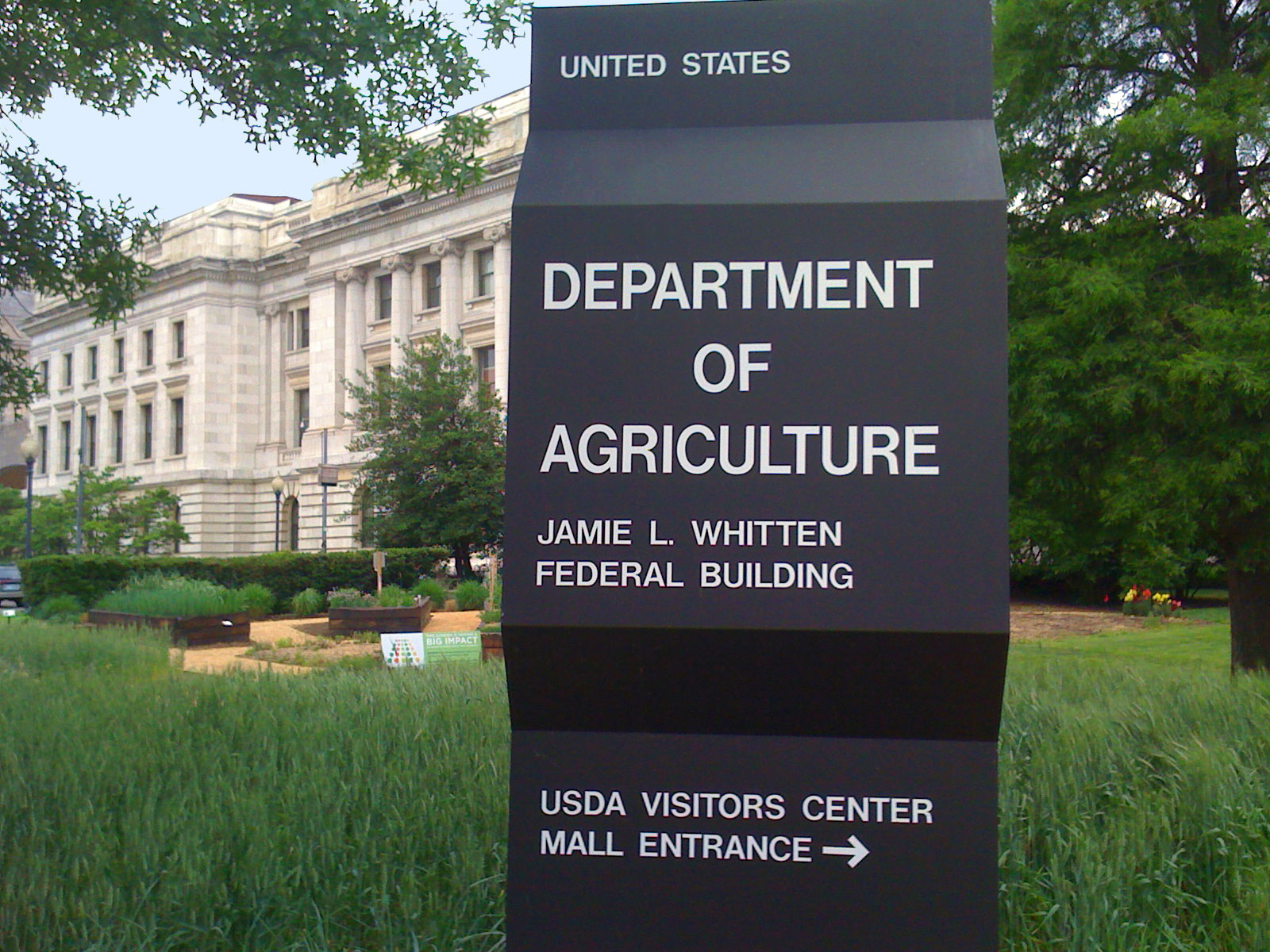Once every two weeks, janitors at the United States Department of Agriculture break open a new pallet of paper towels they’ll use to fill dispensers in 100 bathrooms scattered along seven miles of corridors throughout the USDA complex in Washington D.C. That’s at least two tons of paper a month—more than 24 tons a year. It’s no wonder that waste reduction is the USDA’s highest priority, when it comes to going green.
As the largest building on the National Mall and “the seat of Department leadership,” USDA officials want their headquarters to be “a model facility for others wishing to implement waste reduction and waste minimization programs,” according to the Waste Minimization Plan.
Although much of the USDA’s plan involves recycling, officials took a major step toward stopping waste at its source by installing 20 high-speed, energy-efficient hand dryers in restrooms throughout the USDA headquarters; the USDA reports seeing an immediate 50% reduction in the use of paper towels.
The high-speed energy-efficient dryers also deliver a 95% cost savings compared to paper towels and have a pay back period of less than one year. A Peer reviewed Life Cycle Assessment confirmed that high-speed dryers reduce the carbon footprint of hand drying by 50-70% when compared to both traditional hand dryers and 100% recycled paper towels.
All told, officials say the high-speed hand dryers are:
- Eliminating more than five tons of paper towel waste per year
- Lowering the cost of purchasing paper towels
- Reducing paper towel disposal fees
- Improving bathroom hygiene; there are now fewer wet paper towels trapping germs and overflowing onto the bathroom floor
The agency has targeted the biggest contributors to its waste stream, and high on the list is janitorial services and the extraordinary costs of supplying restrooms with paper towels; in fact, paper towels cost more than any other restroom supply or product.
 By dramatically reducing paper towel waste, janitors are now concentrating on tasks more critical than simply taking out the trash; janitors are now more focused and efficient because they are hauling away less paper towel trash—five million pounds less.
By dramatically reducing paper towel waste, janitors are now concentrating on tasks more critical than simply taking out the trash; janitors are now more focused and efficient because they are hauling away less paper towel trash—five million pounds less.
Overall, combined efforts of the Green Team and all USDA employees have reduced trash pick-ups at the complex from five to four per week, according to the most updated information posted on the USDA Web site.
By reducing the total number of “Trash Picks,” the USDA has:
- Eliminated 52 round trips to the USDA headquarters by big-rig diesel pick-up trucks
- Reduced the amount of diesel fuel being used
- Lowered airborne emissions of diesel exhaust and particulate pollution
- Cut greenhouse gas emissions from trucks traveling to the dump
- Reduced the amount of trash going into local landfills
- Saved $30,000 in dumpster fees
Removing paper towels and rolling out high-speed hand dryers remains a growing part of the agriculture department’s overall waste reduction program. Officials plan to continue installing XLERATOR hand dryers throughout USDA headquarters as they move ever closer to paper-free restrooms. +
Related Stories
| Oct 4, 2022
In dire need of affordable housing, Aspen, Colo. will get a development that provides 277 affordable homes
A few miles from downtown Aspen, Colo., a development will provide 277 new affordable homes for an area experiencing a dire affordable housing crisis.
Green | Oct 3, 2022
California regulators move to ban gas heaters for existing buildings
California regulators voted unanimously recently on a series of measures that include a ban on the sale of natural gas-powered heating and hot water systems beginning in 2030.
| Oct 3, 2022
The College of the Holy Cross completes a $110 million performing arts center
In Worcester, Mass., a one-hour drive from Boston, the College of the Holy Cross has completed its $110 million Prior Performing Arts Center.
Resiliency | Sep 30, 2022
Designing buildings for wildfire defensibility
Wold Architects and Engineers' Senior Planner Ryan Downs, AIA, talks about how to make structures and communities more fire-resistant.
| Sep 30, 2022
Manley Spangler Smith Architects partners with PBK in strategic merger
Manley Spangler Smith Architects (MSSA), a Georgia-based, full-service architectural firm specializing in educational and municipal facilities, announced today a significant development aimed at increasing its capabilities, expertise, and suite of services.
| Sep 30, 2022
Lab-grown bricks offer potential low-carbon building material
A team of students at the University of Waterloo in Canada have developed a process to grow bricks using bacteria.
| Sep 29, 2022
FitzGerald establishes Denver office
The new location bolsters FitzGerald’s nationwide reach and capitalizes on local expertise and boots-on-the-ground to serve new and existing clients seeking to do business in Denver and the Front Range, as well as the Southwest United States, California, and Texas.
| Sep 28, 2022
New digital platform to foster construction supply chains free of forced labor
Design for Freedom by Grace Farms and the U.S. Coalition on Sustainability formed a partnership to advance shared goals regarding sustainable and ethical building material supply chains that are free of forced labor.
| Sep 27, 2022
New Buildings Institute released the Existing Building Decarbonization Code
New Buildings Institute (NBI) has released the Existing Building Decarbonization Code.
| Sep 23, 2022
High projected demand for new housing prompts debate on best climate-friendly materials
The number of people living in cities could increase to 80% of the total population by 2100. That could require more new construction between now and 2050 than all the construction done since the start of the industrial revolution.

















